This delicious vegan scalloped potatoes recipe will give you thinly sliced potatoes baked in rich, creamy, garlicky sour cream-based white sauce. The best part is you do not need any cashews or tofu to make it the creamiest potato casserole, but it is packed with flavor.
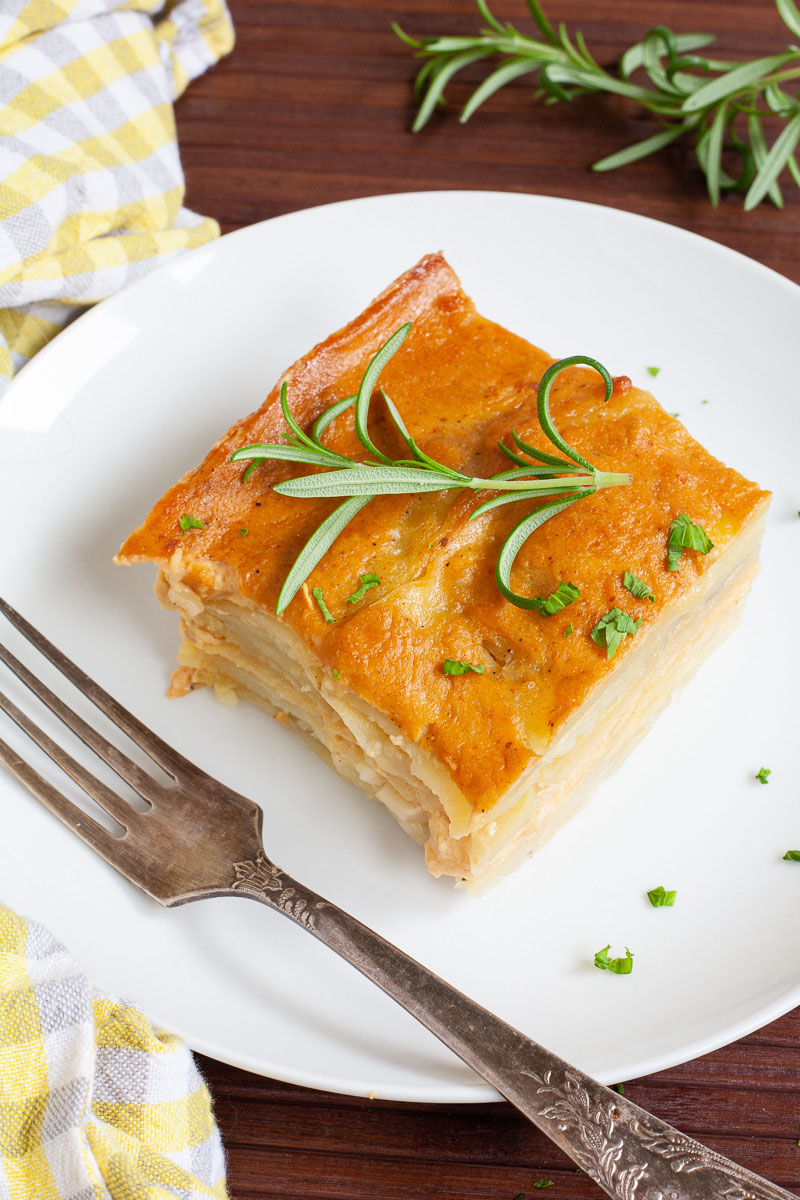
Want to save this post?
Enter your email below and get it sent straight to your inbox. Plus, I’ll send you budget recipes and money-saving tips every week!
Potatoes are the perfect comfort food. It is always a good idea to have some excellent potato side dish recipes on hand, and that is why I highly recommend you check out this vegan potato casserole and my savory vegan sweet potato casserole. This recipe also features among these vegan Thanksgiving recipes.

Jump to:
❤️ Why you’ll love it
This vegan scalloped potatoes recipe is simple but gives such a rich, creamy texture without needing any cashews or tofu. The secret is the sour cream white sauce that covers each thinly sliced potato, making an irresistibly creamy and garlicky casserole.
The vegan sour cream, non-dairy milk, and veggie broth give the sauce a smooth, rich creaminess, while nutritional yeast, onion powder, and garlic powder add incredible flavor. The result is a sauce that is velvety, packed with creaminess, and full of flavor.
It is also super easy to make, so both newbie cooks and seasoned pros can whip it up with no problem. Using a mandolin to get uniform potato slices saves time prepping and makes sure the taters all soften at the same rate while they bake. Putting together the dish is simple; just layer potatoes and sauce in a baking dish and pop it in the oven until the top is bubbly and browned.
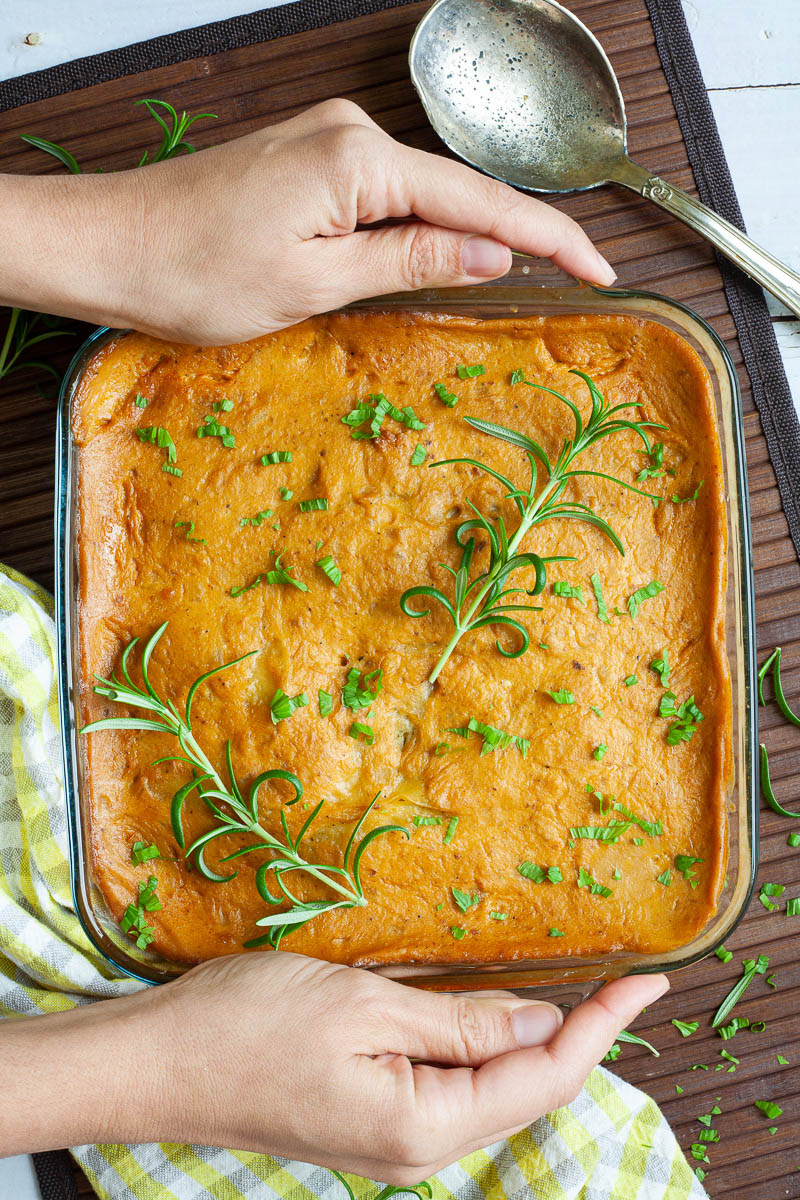
🧾 Key ingredients
Potatoes are the star of this dish. If you use new potatoes, there is no need to peel them; their skin is thin, edible, and nutritious. Plus, the thinner you slice the potatoes, the shorter the baking time.
Sweet paprika powder and cornstarch are vital to the sauce’s unique taste and consistency. The paprika adds a touch of sweetness, while the cornstarch helps thicken the sauce to the perfect creaminess.
Dairy-free milk and vegan sour cream blend beautifully with the other ingredients, creating a rich, creamy, garlicky, sour cream-based white sauce that is divine.
Nutritional yeast is a must-have ingredient for any vegan kitchen. In this recipe, it adds a cheesy, nutty flavor that takes the dish to the next level. You can also use vegan parmesan cheese in place.
🛒 You can find detailed measurements for all ingredients in the printable version of the recipe card at the bottom of this post.
🥘 Equipment
For this vegan scalloped potatoes recipe, a mandolin slicer is your best friend. This handy tool will help guarantee that all your potato slices are uniform and will lead to even cooking and a beautiful presentation. Trust me, it will significantly reduce your prep time and make the whole process a breeze. You will wonder how you ever managed without one!
👩🍳 Instructions
Preparing the ingredients
STEP 1
Start by washing, peeling, and slicing your potatoes. The most efficient way to do this is using a mandolin slicer, which will help ensure that all slices are the same and significantly shorten your prep time.
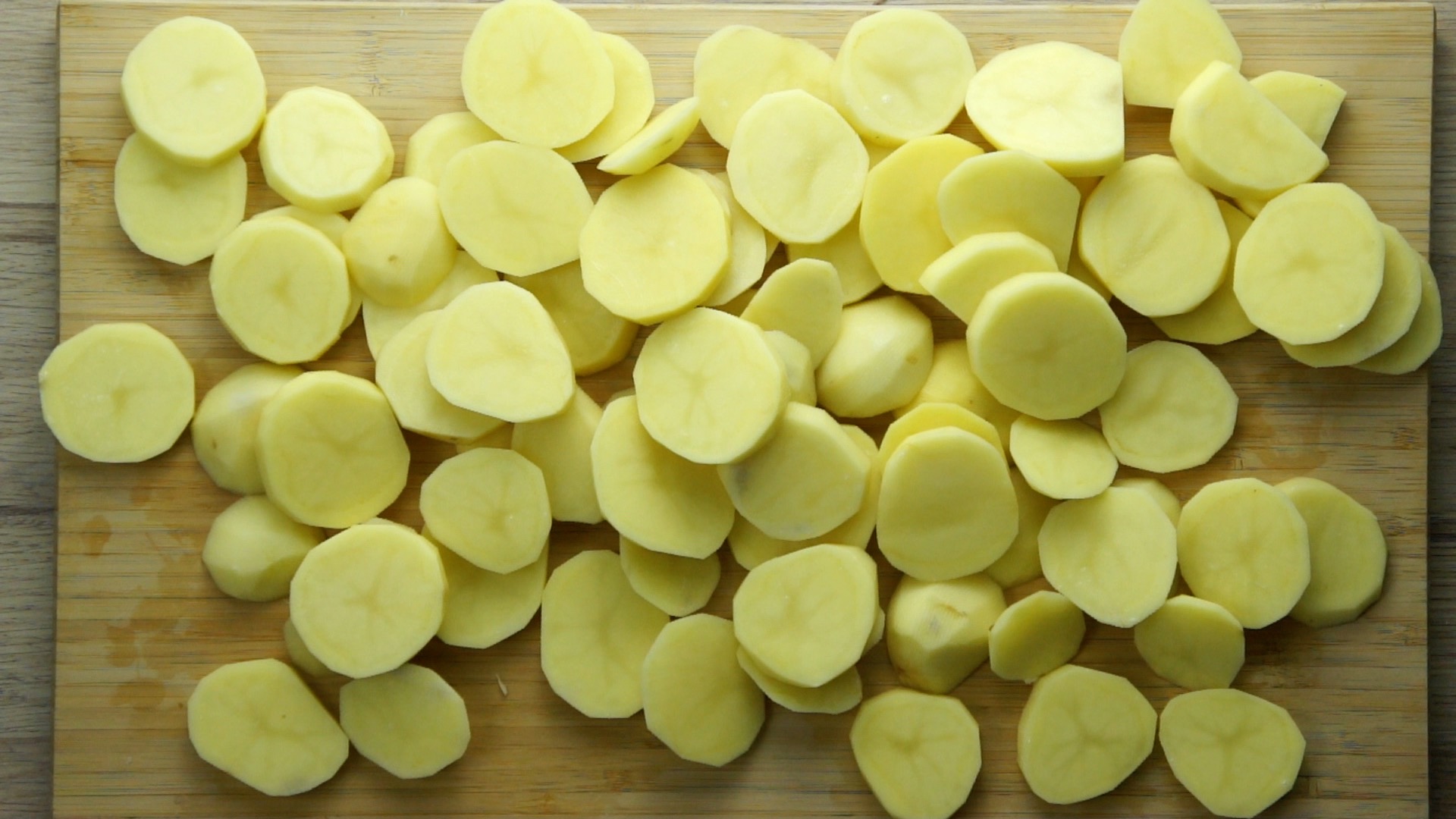
Making the sauce
STEP 1
Heat your skillet over low-medium heat, then add olive oil and chopped onion. Sauté this mixture for about two to three minutes. Add chopped garlic to the skillet, stir, and cook for another minute. Then remove it from the stove and add smoked sweet paprika powder and cornstarch. Mix these ingredients well.
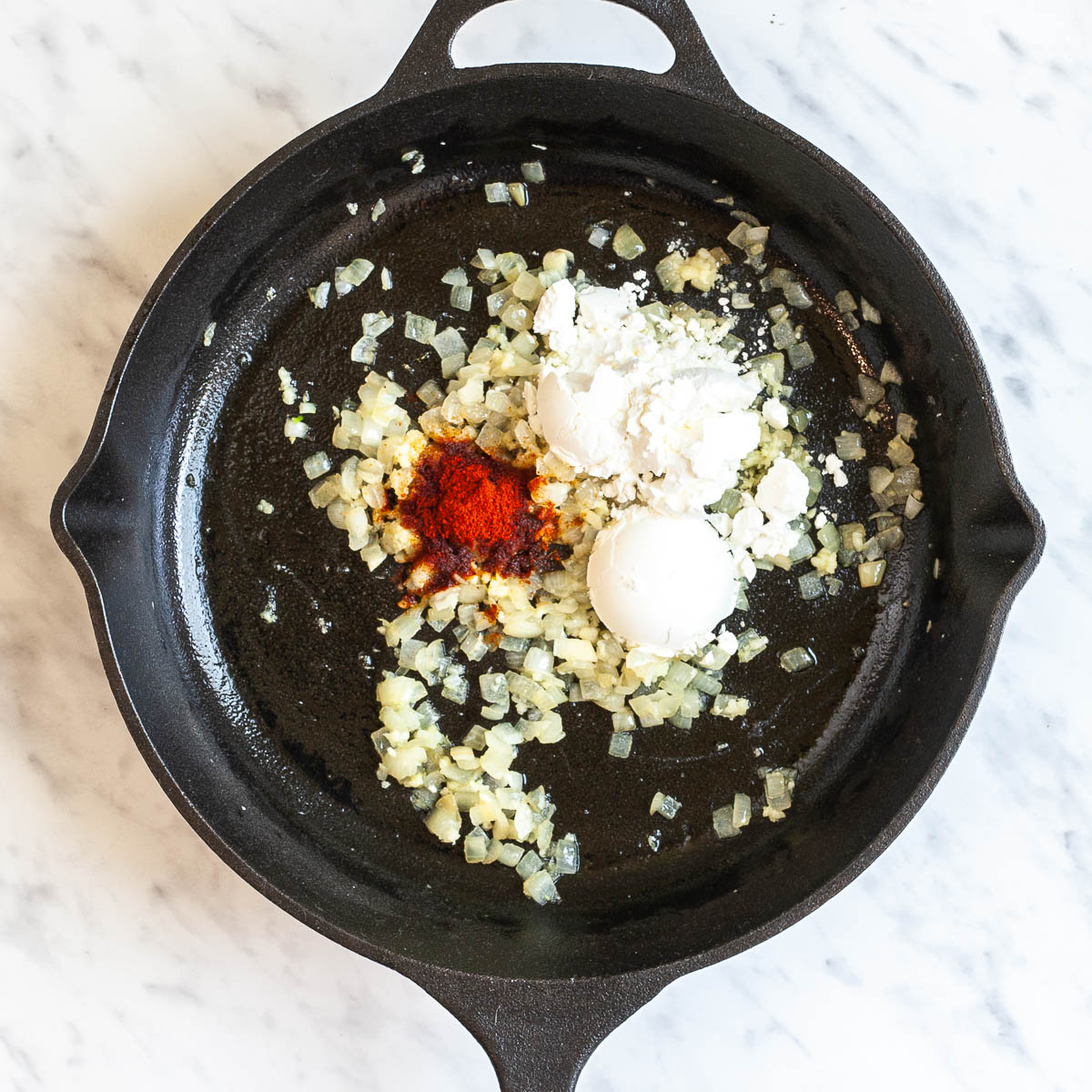
STEP 2
In a separate bowl, mix your vegan sour cream with dairy-free milk. Both of these ingredients should be at room temperature. Add half a cup of this mixture to your skillet, whisking well to guarantee a smooth sauce.
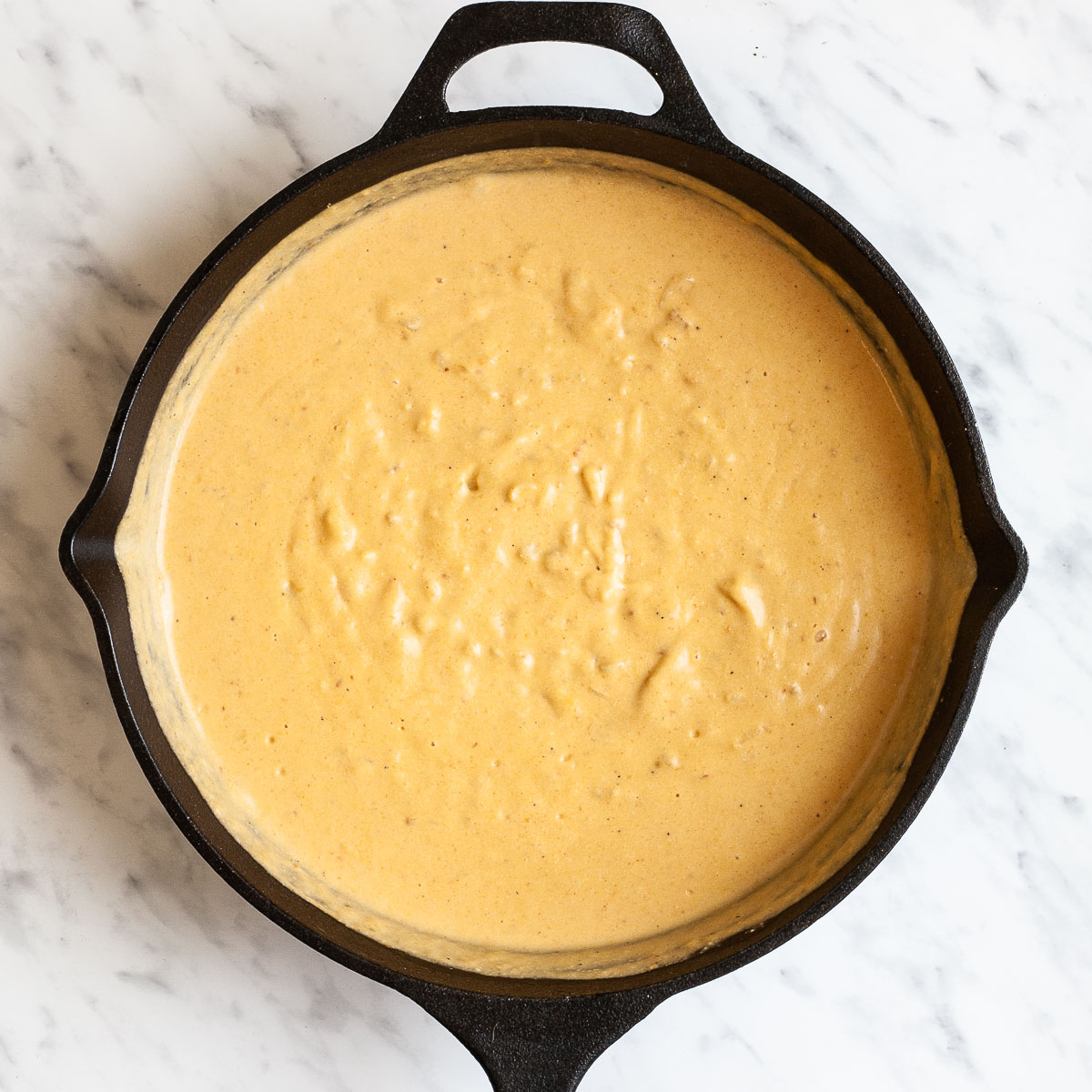
STEP 3
Once the milk-sour cream mix is well incorporated, add your vegetable broth and stir thoroughly. Finally, add garlic powder, onion powder, nutritional yeast, salt, and black pepper. Mix these ingredients well.
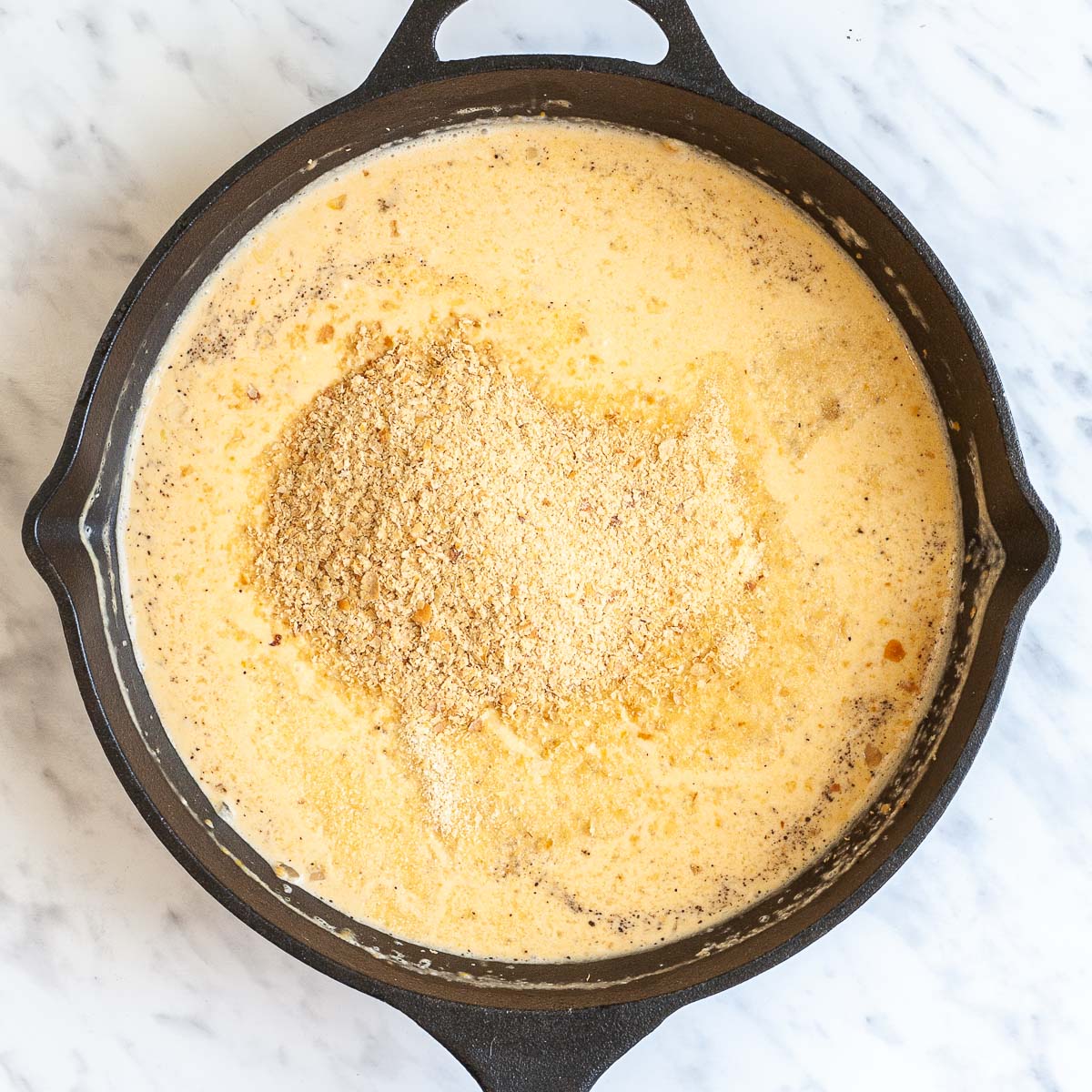
Making vegan scalloped potatoes
STEP 1
Preheat your oven to about 395 degrees Fahrenheit (202 °C). Spread vegan butter, coconut oil, or other oil at the bottom of your baking dish. Begin layering your dish by adding the first two layers of thin potato slices. Then, add a bit of the vegan cheese sauce.
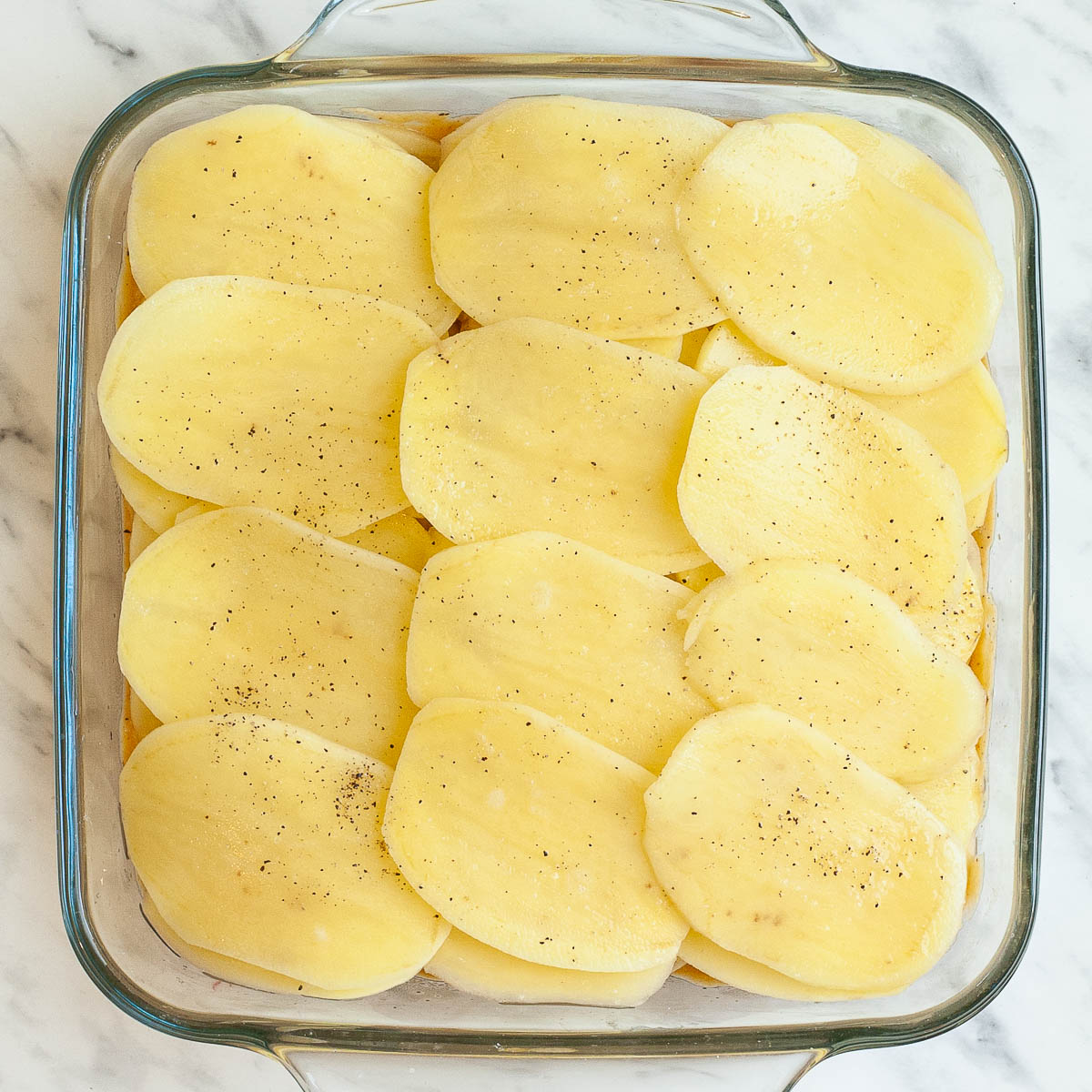
STEP 2
Repeat this process until you run out of potatoes and sauce. Ensure you have enough sauce left to cover all the potatoes on the top.
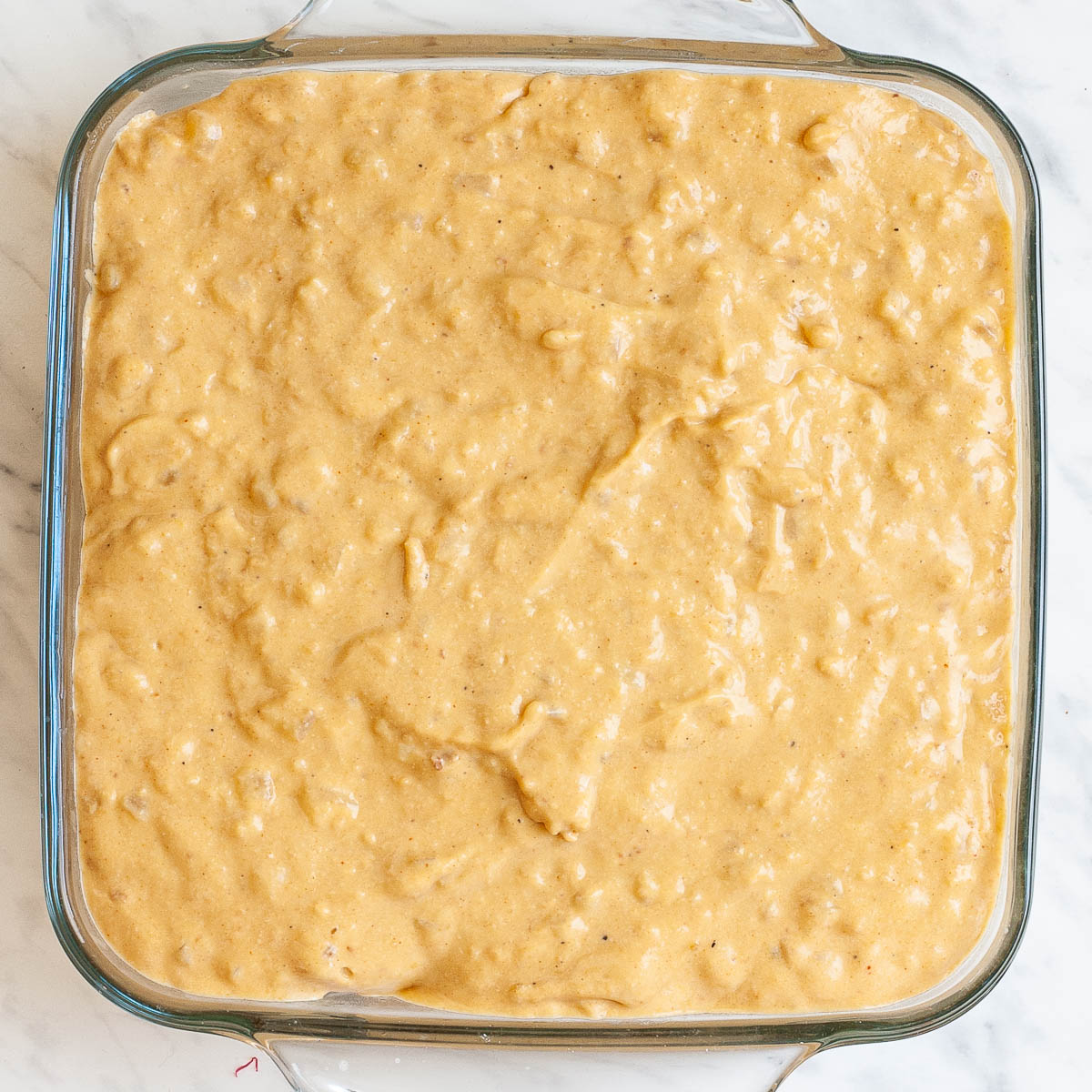
STEP 3
Cover your dish with tin foil and bake the potatoes for about 40 minutes. After this time, remove the foil and bake for 20 minutes. To finish, sprinkle your dish with breadcrumbs and grated cheese. Bake it under the broiler for an additional 10 minutes. Enjoy your delicious vegan scalloped potatoes!
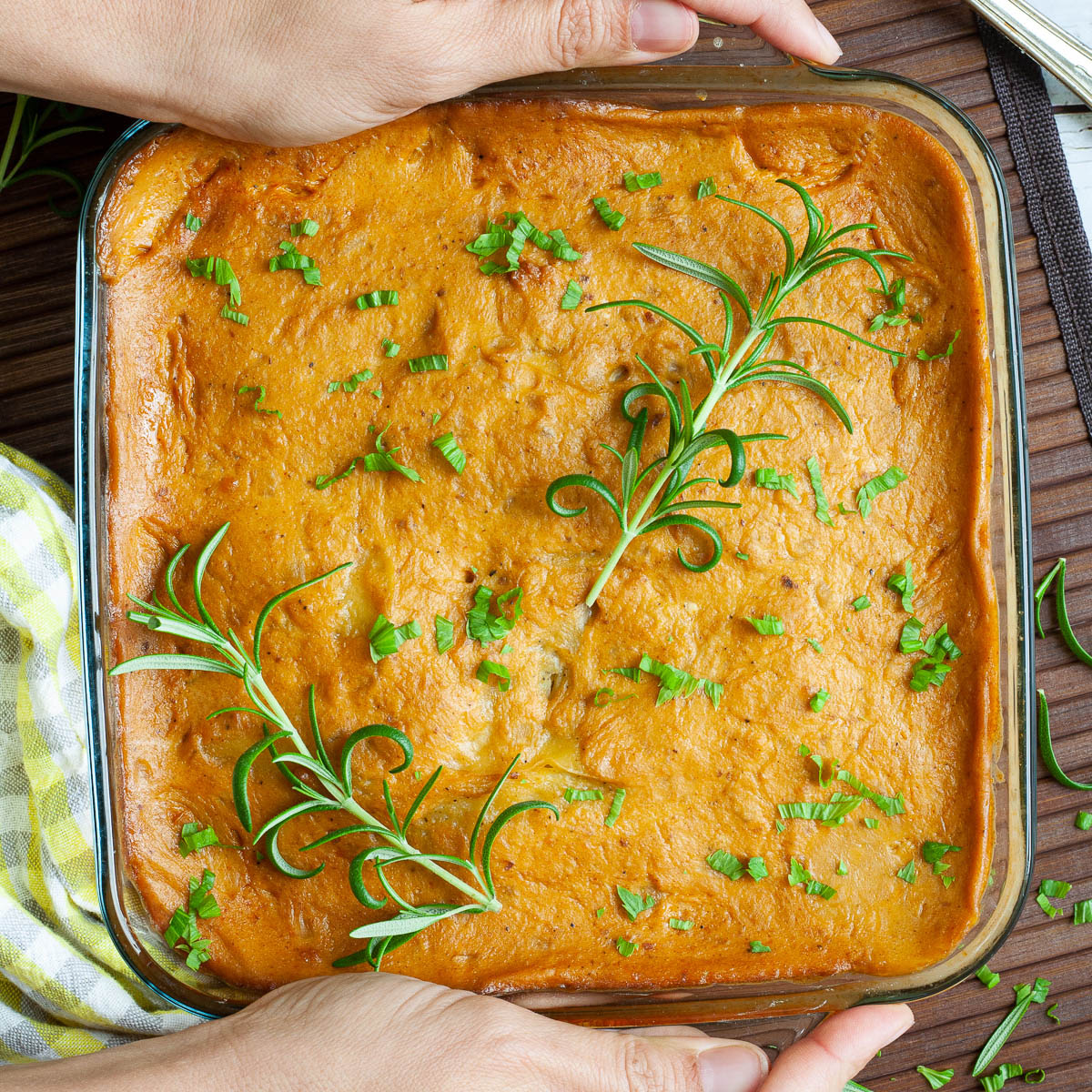
💡 Expert tip
When preparing your vegan scalloped potatoes, the thickness of your potato slices can make a big difference. The thinner you slice the potatoes, the shorter the baking time. Using a mandolin slicer ensures that all pieces are the same width, which allows them to soften simultaneously, resulting in a perfectly cooked dish.
🔄 Variations
Adding some sweet potatoes to the regular potatoes makes these vegan scalloped potatoes a little sweeter and more colorful.
I like to throw in some mushrooms as well, and they give a nice, earthy flavor and different texture, especially if you add them when making the sauce, so they can soak up all that garlicky goodness.
If you want a little kick, try sprinkling on chili powder or red pepper flakes before baking. It will spice things up without totally overpowering the creamy sauce.
You can play around with different kinds of vegan cheese in this recipe, too. Almond cheese, soy cheese, and cashew cheese are great choices since they all bring something different to the table flavor and texture-wise. It is fun to experiment.
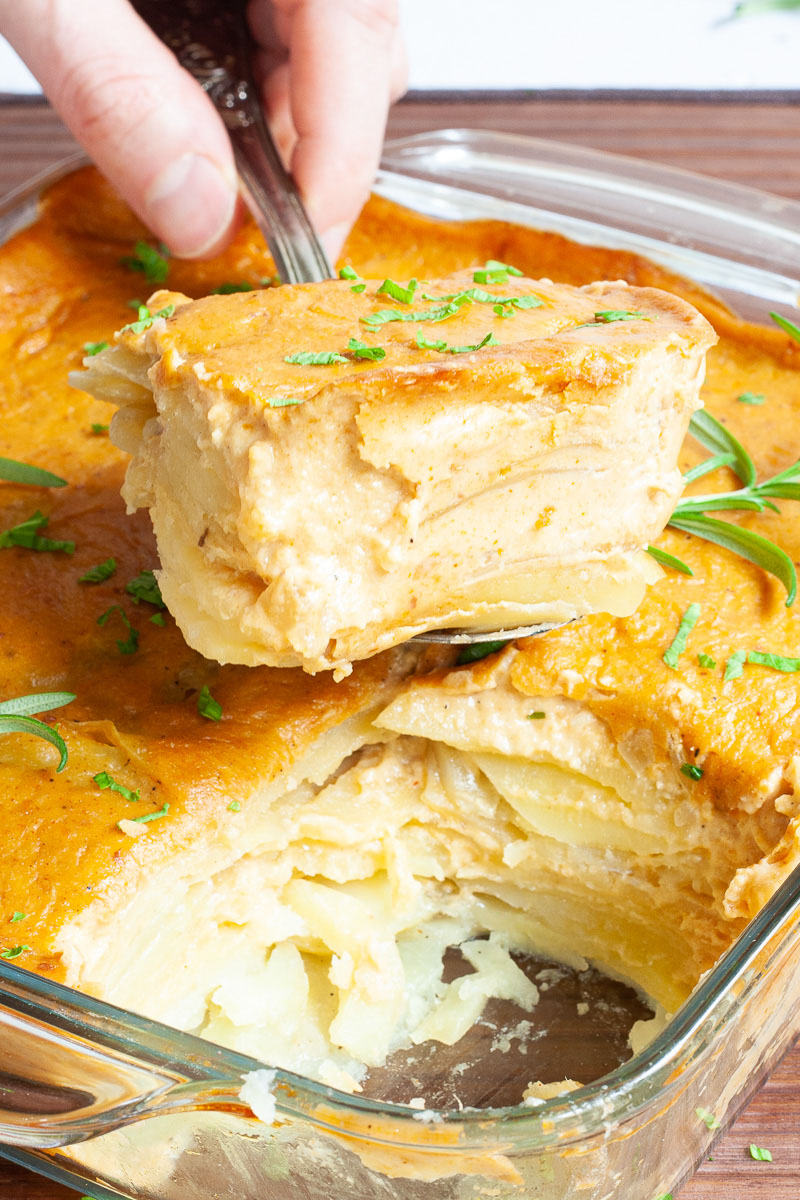
🥣 Serving ideas
This creamy, cozy dish is super versatile, and I cannot wait to share some of my favorites.
These dairy-free scalloped potatoes make an excellent side to all kinds of main courses. They go great with a hearty lentil loaf or a comforting vegan pot pie.
If you like having other French food, try it with this one-pot ratatouille. The potatoes add a creamy vibe that plays off the tangy sauce nicely.
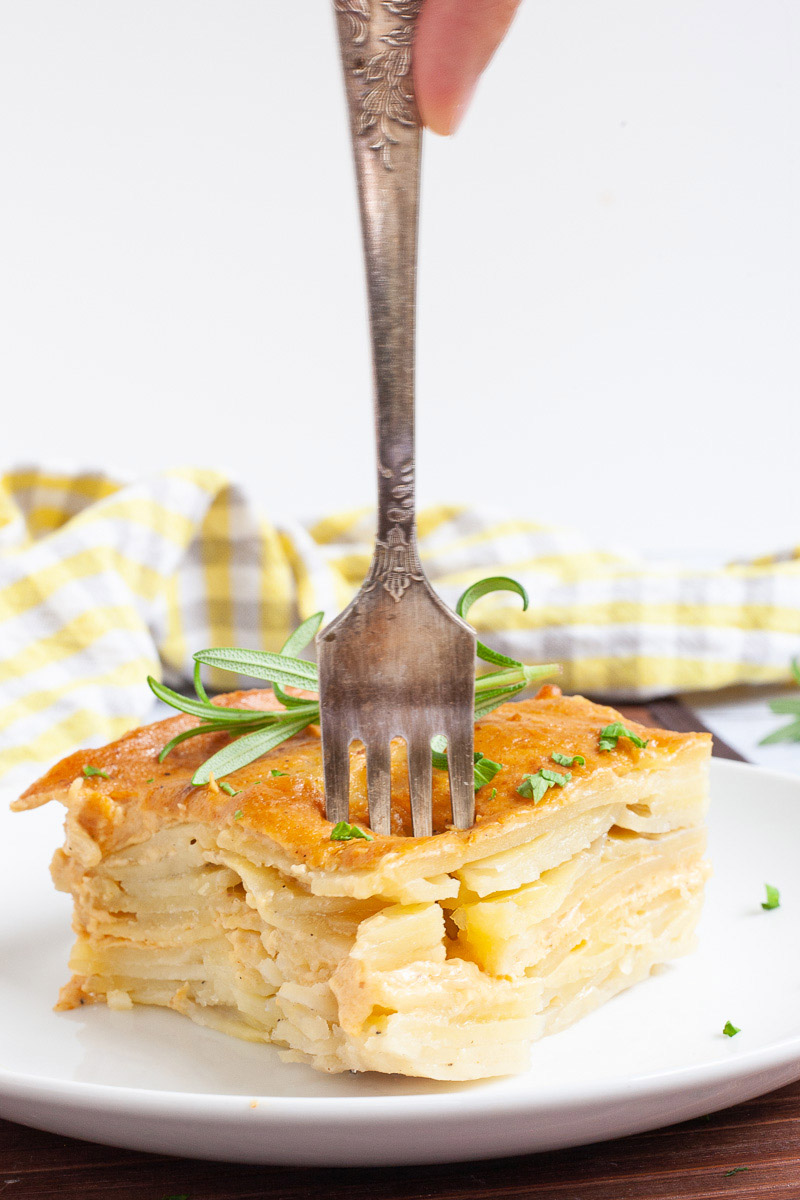
❄️ Storing tips
Storing these vegan scalloped potatoes is super easy since the flavors actually get better after a night in the fridge! Let the dish cool off first before storing it in a sealed container. It’ll keep for 3 or 4 days, no problem.
Freezing is not something I recommend. The creamy sauce doesn’t hold up well. It is, instead, best to have this dish fresh or store it in the fridge.
Reheating is simple. When you are ready to eat, put them in an oven-safe dish. Preheat the oven to 350°F. Cover it with foil so the top stays good, and bake for about 20 minutes until heated through. You can also warm individual portions in the microwave. Just give it a stir every 30 seconds so it heats evenly.

🤔 FAQs
If your sauce is not reaching the desired thickness, you can add more starch. However, ensure you first dissolve it in a bit of milk. For instance, mix one tablespoon of flour or starch with at least two tablespoons of milk. Remember, you must bring the sauce back to a boil to activate the starch. Also, remember that the sauce will further thicken as it cools down.
If your sauce is too thick, add more milk, preferably one to two tablespoons at a time. This will help adjust the consistency of your sauce to your liking.
Don’t worry if you find lumps in your sauce. Simply remove the heat and blend it with a regular or immersion blender to break up any lumps. If the sauce turns too thin or thick after blending, you can adjust it using the above tips.
For this recipe, I recommend using Yukon gold potatoes due to their creamy texture. However, Russet potatoes can also work well. For more information about different types of potatoes, you can check out this informative article by the Huffington Post.
Yes, you can prepare and assemble this dish the night before and bake it the next day. Cover it with a lid and store it in the refrigerator. However, remember to bake it before serving, as this dish is best enjoyed hot and fresh out of the oven.
More vegan potato side dishes
You can choose from many vegetable side dishes, but there is just something irresistible with potato-based dishes.
THANK YOU so much for visiting our website. Please comment below if you have tried this recipe. We LOVE hearing from you! If you loved the recipe, please don’t forget to give us a ⭐⭐⭐⭐⭐ RATING. We appreciate all of our readers.
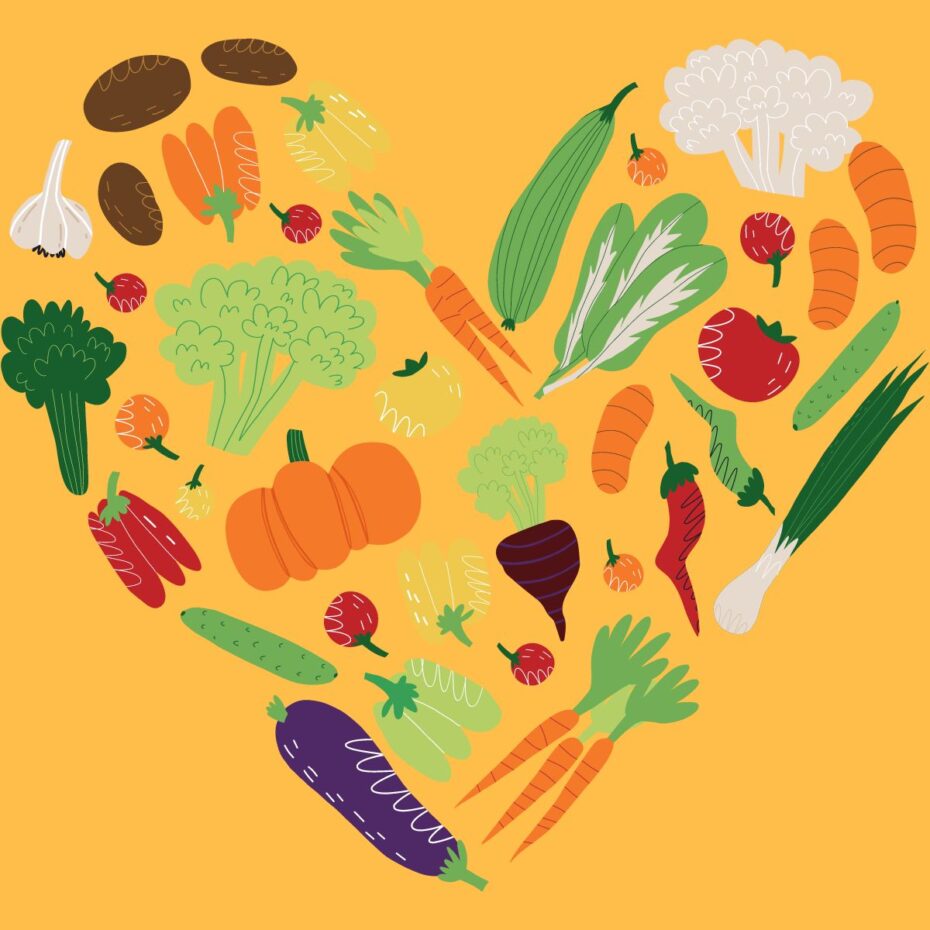
⇒ GET OUR FREE 7-DAY VEGAN MEAL PLAN E-BOOK NOW! OR CHECK OUT ALL VEGAN MEAL PLAN RECIPES! ⇐
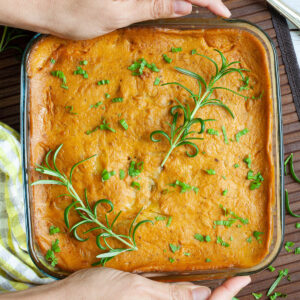
Creamy Vegan Scalloped Potatoes (No cashews)
Ingredients
- 1.5 pounds Potatoes
- 1 Tbsp Coconut oil to grease the glass dish
Vegan cream sauce (in order of appearance)
- 1 Tbsp Olive oil
- 1 Onion (medium)
- 3 cloves Garlic
- ½ tsp Sweet paprika powder
- 3 Tbsp Corn starch
- 1+½ cup Dairy-free milk
- 5 oz Vegan sour cream
- ½ cup Vegetable broth
- 5 Tbsp Nutritional yeast
- 1 tsp Onion powder
- 1 tsp Garlic powder
- Salt and Pepper to taste
Instructions
Slicing the potatoes with a mandolin
- Wash them, peel them and slice them. The best way to do that is by using a mandolin slicer. It will shorten the prep time significantly and ensure that all slices are the same.
Preparing the sauce
- Heat your skillet over low-medium heat.
- Add olive oil and chopped onion. Stir and sauté for 2-3 minutes.
- Add chopped garlic. Stir and cook for another minute.
- Take it off the stove and add smoked sweet paprika powder and cornstarch. Mix it well.
- In a separate bowl, mix vegan sour cream with dairy-free milk. Both need to be at room temperature.
- Add ½ cup from the milk-sour cream mix and whisk it well. It would be best to go in small batches to ensure you get a smooth sauce. Go until you run out of liquid to add. Whisk continuously.
- When the milk-sour cream mix is well incorporated, add the vegetable broth. Stir thoroughly.
- Finally, add garlic powder, onion powder, nutritional yeast, salt, and black pepper. Mix well.
- Bring it to a boil and wait until the sauce thickens.
Baking the scalloped potatoes
- Pre-heat the oven to 395 Fahrenheit (ca. 202 °C)
- Spread vegan butter, coconut oil, or other oil at the bottom.
- Add the first two layers of thin potato slices.
- Add a bit of the vegan cheese sauce.
- Repeat until you run out of potatoes and sauce. Make sure you have enough sauce left to cover all potatoes on the top.
- Bake the potatoes covered with tin foil for 40 minutes.
- Take the foil off and bake it for another 20 minutes.
- After that, you can sprinkle it with breadcrumbs and grated cheese and bake it under the broiler for 10 minutes.
Notes
- If you use new potatoes, you don’t need to peel them as their skin is thin, edible, and nutritious.
- The thinner you slice the potatoes, the shorter will be the baking time. We recommend getting a mandolin slicer* since the slices will have the same width and soften simultaneously.
- We recommend using tin foil to cover the scalloped potatoes for three reasons: 1) it keeps the heat in; 2) it ensures that the middle softens in time; and 3) it helps to avoid burning the top or getting it too dark too early.
- Not thick enough? → Add more starch, but make sure you first dissolve it in a bit of milk. For example, mix 1 Tablespoon of flour or starch with at least 2 Tablespoons of milk. You need to bring it back to a boil to activate them. Note: The sauce will further thicken when it is cooling down.
- Too thick? → Add more milk, like 1-2 Tablespoons at a time.
- Help, I got lumps! → Take it off the heat and use a blender (immersion blender) to break up any lumps. If the sauce turns too thin or thick, go with the above suggestions.





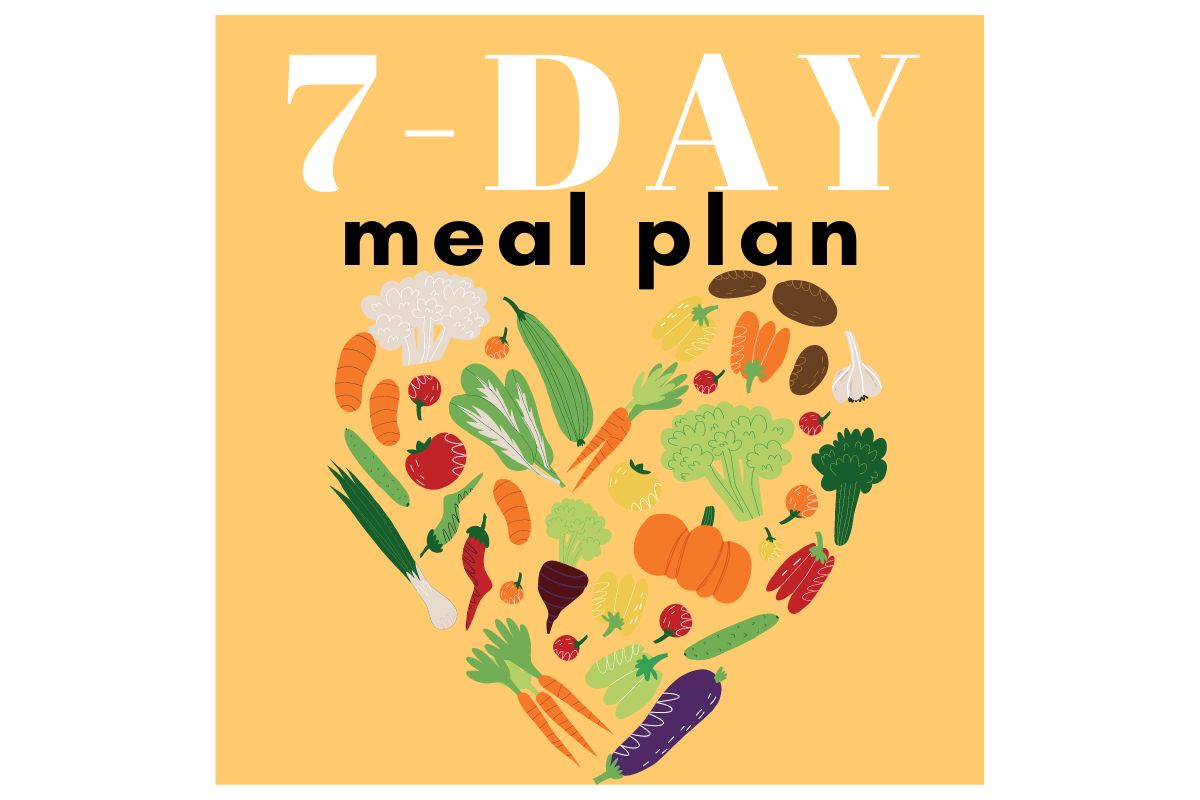
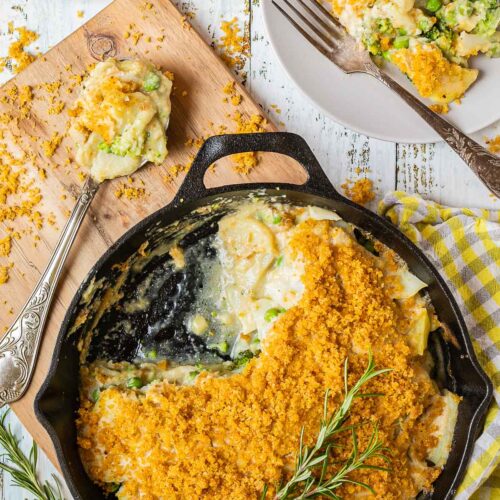
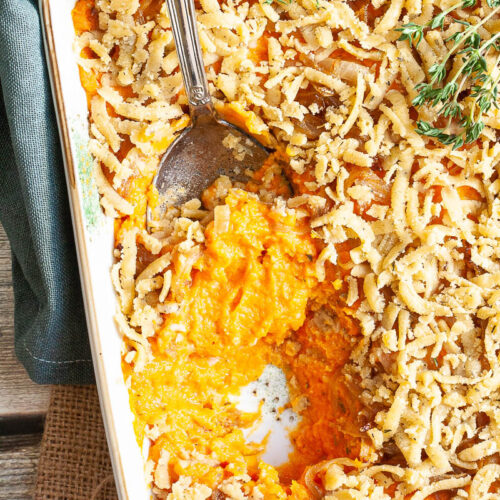
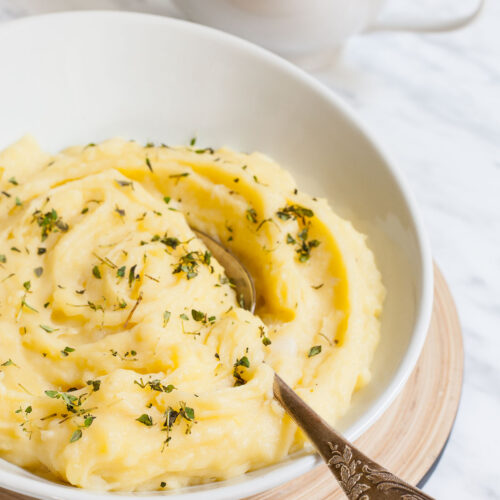
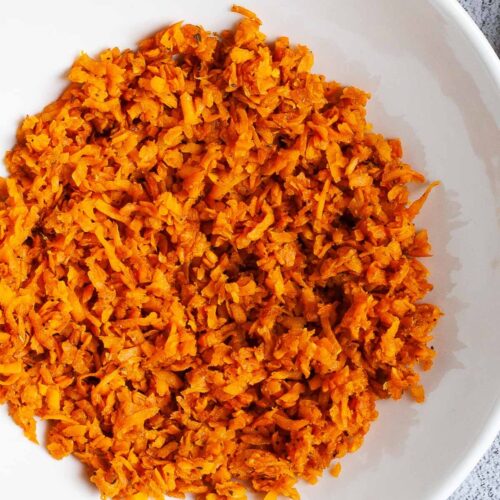
Leave a comment